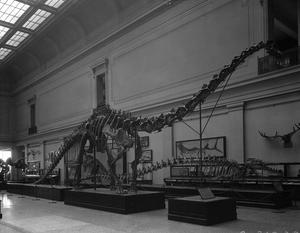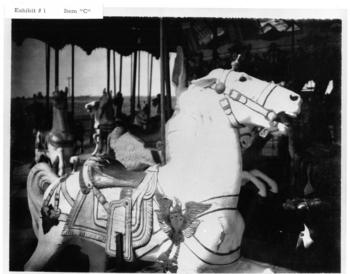This is the first installment of a new quarterly series that highlights the collections that people are using at the Archives and the kinds of projects, publications, productions, and exhibitions our collections are a part of. Please enjoy!
When asked what the Smithsonian Institution Archives collects, we say we hold records about the history of the Smithsonian and its people, programs, research, and activities. While accurate, this doesn't really give people a clue about what is actually in those records.
The Archives' Reference Team handles an average of around 5,000 queries per year, and if you ask us what people have been researching at the Archives recently, you'll get some pretty interesting responses. Although not comprehensive, here's a snapshot of the diverse range of information encompassed by the history of the world's largest museum complex.
Over the past three months, researchers' long-term projects have included:
- Joseph Henry’s correspondence with Japanese ambassador Arinori Mori
- The history of tropical research stations in the Caribbean in the twentieth century (including the Smithsonian's Tropical Research Institute).
- The Smithsonian's entry to the internet in the 1990s.
Upcoming use of our photos or documents includes:
Books
- A Christmas Flight, by Mary Lipsey
- Aboul'l Baha in America, by Mona Khademi
- Enlightened Zeal: The Hudson's Bay Co. and Scientific Networks, by Ted Binneman
- 10,000 Birds: Ornithology since Darwin, by Bob Montgomerie which will include a portrait of Alexander Wetmore, ornithologist and sixth Secretary of the Smithsonian Institution
- T. Rex: Scavenger or Predator?, by Jacqueline Adams, which will include a portrait of paleontologist Barnum Brown
Media Productions
- "The Fruit Hunters," film by Yung Chang
- "War in Washington," TV production for The Smithsonian Channel by Patrick Hare
- "Dancing Salmon Home," film by Moving Image Productions
- "Girlrillaz," film by Bridget Rafferty
- Radio broadcast commemorating the 50th anniversary of Mariner, National Public Radio
- "Women of Innovation," The Canadian Science and Technology Museum website which will include a portrait of botanist Carrie M. Derick
Exhibitions
- "Extraordinary Women: Science and Medicine since 1650," The Grolier Club, Princeton University
Taking honors as our most unusual reference query of the quarter was the request for a copy of a 1932 research paper on anesthetizing oysters. Two questions sprang to mind:
- How could you tell?
- Why would you?
While it turned out that the research wasn't conducted by the Smithsonian, we were able to locate a contemporary newspaper article on the study that gave direction to the researcher -- and answered the questions:
- The muscle closing the oyster's shell relaxes.
- The oyster is easier to shuck.
Related Resources
- Reference Services at the Smithsonian Institution Archives
Related Collections
- Record Unit 95 - Photograph Collection, 1850s, Smithsonian Institution Archives
- Accession 90-105 - Science Service, Records, 1920s-1970s, Smithsonian Institution Archives
Produced by the Smithsonian Institution Archives. For copyright questions, please see the Terms of Use.



Leave a Comment